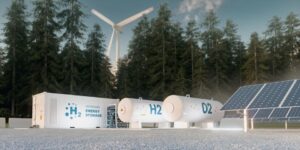 On June 25, ArcelorMittal, the world’s largest steel manufacturer, announced that it is investing in two routes to lower emissions by 30% by 2030 and become carbon neutral by 2050. The company released a report, Climate Action in Europe, that identifies smart carbon technologies and the direct reduction of iron ore as necessary to achieve carbon neutrality. These technologies will require using hydrogen instead of natural gas as a reducing agent. ArcelorMittal’s climate action plan put hydrogen in focus and on the corporate climate action map.
On June 25, ArcelorMittal, the world’s largest steel manufacturer, announced that it is investing in two routes to lower emissions by 30% by 2030 and become carbon neutral by 2050. The company released a report, Climate Action in Europe, that identifies smart carbon technologies and the direct reduction of iron ore as necessary to achieve carbon neutrality. These technologies will require using hydrogen instead of natural gas as a reducing agent. ArcelorMittal’s climate action plan put hydrogen in focus and on the corporate climate action map.
Since Europe’s COVID-19 recovery plans identify hydrogen as a key enabler of a clean energy future, it is likely that other corporations, countries, and governments will soon follow suit. Earlier in 2020, the European Commission presented its new European Industrial Strategy to help Europe’s industry lead the transition toward climate neutrality and digital leadership. The strategy establishes the key drivers of Europe’s industrial transformation and proposes a comprehensive set of future actions, including a Clean Hydrogen Alliance to accelerate the decarbonization of industry and maintain industrial leadership. In a May 27 press release, the European Commission noted the rapid upscaling of clean hydrogen production and its use in Europe, and it has established a goal of 1 million tonnes of clean hydrogen production for its first phase. The new Clean Hydrogen Alliance also aims to steer and coordinate the rapid upscaling of clean hydrogen production and use in Europe.
Source: “Europe Should Focus On Hydrogen For A Reliable And Flexible Energy Future”, Forbes
